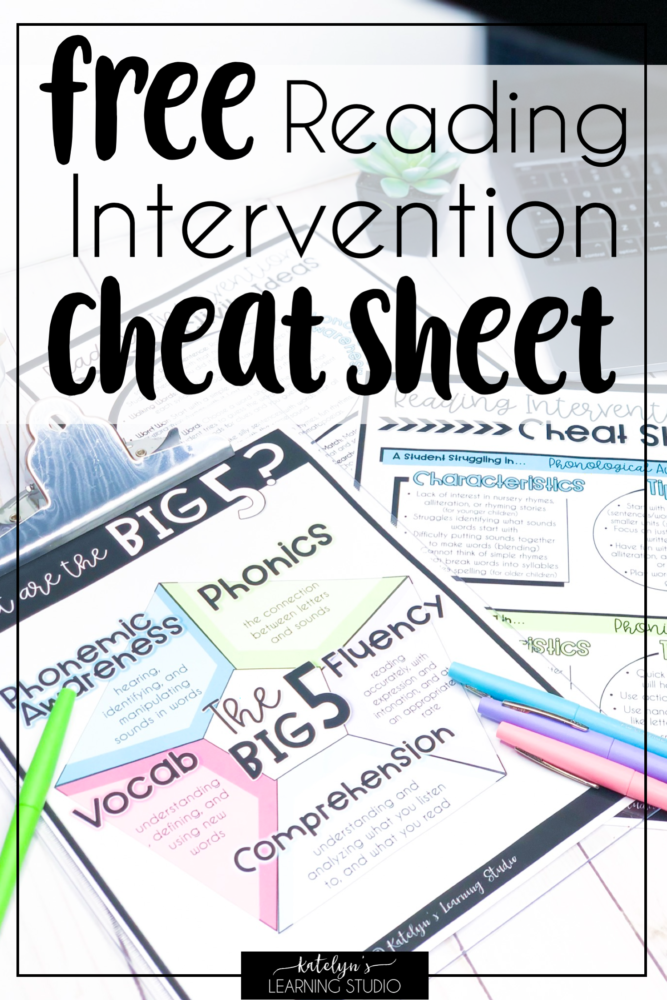Strategies for Reading Comprehension
Try these 8 strategies for reading comprehension to help your struggling readers understand their text. These activities will help your students read with comprehension and purpose and help foster a love of reading!
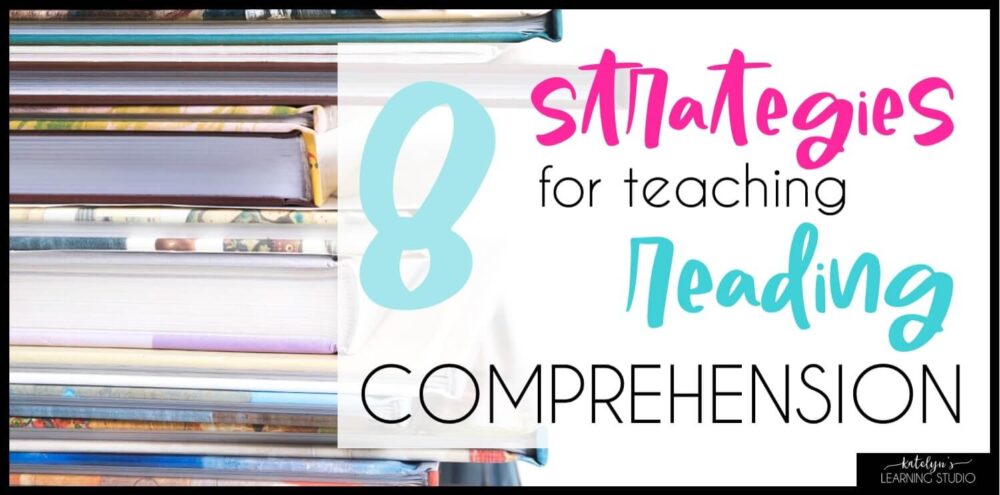
8 reading comprehension tips that can help your students become better readers.
Why is Reading Comprehension Important?
In the early elementary years, a lot of focus is placed on phonics and fluency. They are so heavily tested that sometimes we forget about reading with comprehension. In reality, reading comprehension is the pinnacle end goal we want our readers to achieve. We read to understand and learn. Every other reading skill (phonemic awareness, phonics, fluency, and vocabulary), all have the goal of helping us be able to read words and understand what they mean.
How to Improve Reading Comprehension
One of the best things you can do to improve reading comprehension is to foster a love of reading. Show students how to enjoy reading–get lot in the stories or learn new facts. Model reading for fun and do a ton of read alouds and class discussions about them. Then as they read independently, encourage them to talk about what they read.
If you need help figuring out which students need help and where they need it, read this post on The Key to Stress Free Reading Intervention to find some direction.
Reading Comprehension Interventions
Sometimes our students need a little extra help developing their reading comprehension skills. This is where it is helpful to have some reading comprehension intervention strategies up your sleeves. You can use pre-created intervention plans like this Reading Comprehension Intervention Binder (and here’s a Listening Comprehension version) or you can implement these strategies. If you’re looking for even more ideas for your struggling readers who need a little extra help, check out my Ultimate List of Reading Intervention Activities and these 6 Tips to Make Interventions Actually Work.

Strategies for reading comprehension that will help your struggling readers.
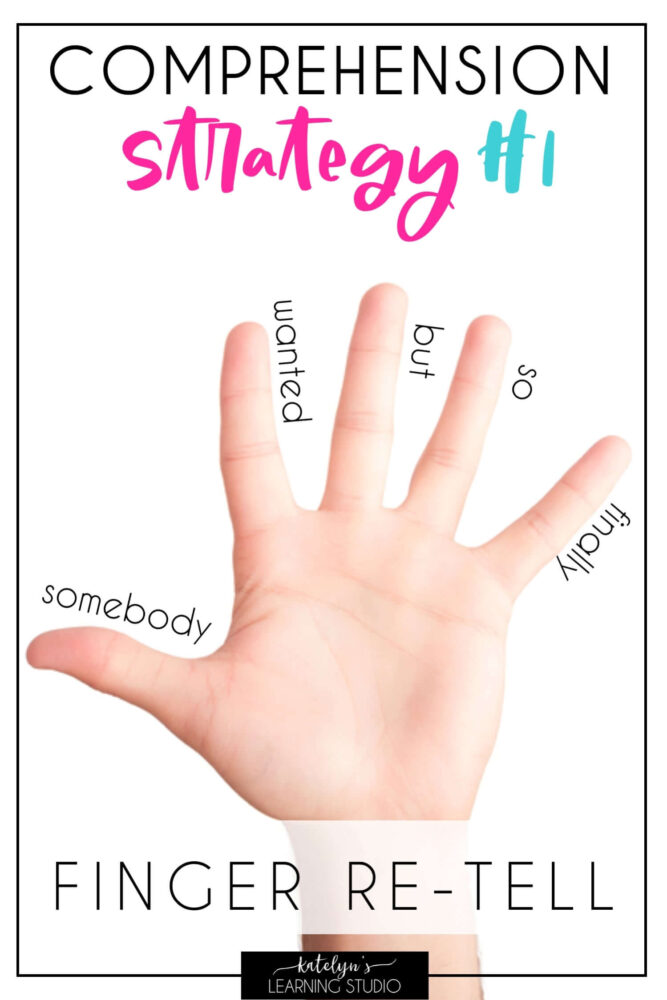
Reading comprehension intervention strategies can be quick and simple.
Strategies for Reading Comprehension #1: Finger Re-tell
The finger retell is a quick, simple reading comprehension strategy to use with students after any story (read aloud or independently). The fingers add a visual and kinesthetic component, and are great memory cues that they will always have with them. You can teach this to parents as well so they can practice at home. After reading a story, have students hold up one finger for each of the following retelling points:
- Thumb–Somebody: Who is the story about?
- Pointer Finger–Wanted: What do they want?
- Middle Finger–But: What problem do they run into?
- Ring Finger–So: What do they do to solve the problem?
- Pinky–Finally: How did the story end?
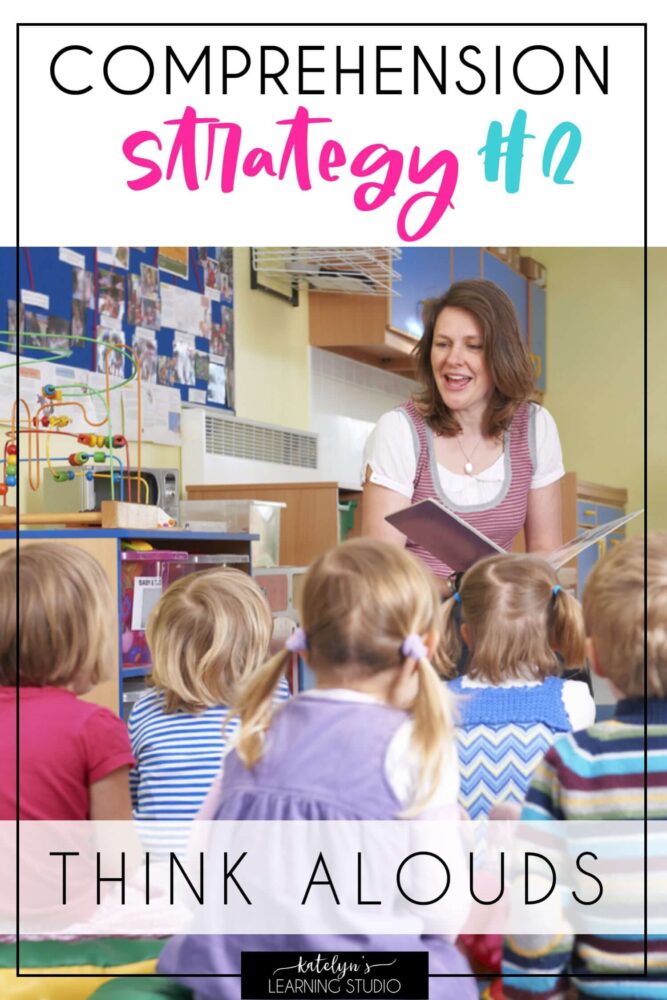
Teaching reading comprehension can happen naturally during read alouds.
Strategies for Reading Comprehension #2: Think Alouds
(During Read Alouds)
Modeling is a great way to demonstrate reading with comprehension. When you are reading aloud any text to your students (story, article, directions, etc.), model what goes on in your head as you think about what you read. Literally, “think out loud.” Read, then stop and wonder out loud about a question, make a note about an interesting point, or make a prediction. Point out things that you didn’t understand, and go back to the text to clarify, talking about it as you do. This gives a solid example for students of how they should read when they are reading for comprehension.
If you are looking for books that encourage good thinking and quality questions, check out my favorite read aloud recommendations!
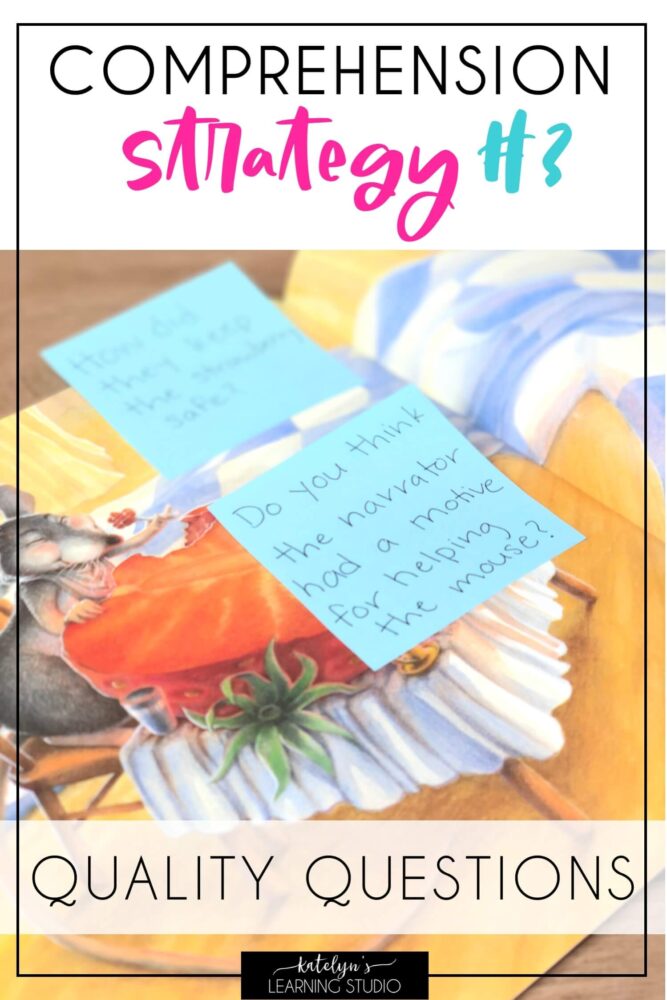
Reading with comprehension can be built by asking great questions during story time.
Strategies for Reading Comprehension #3: Quality Questions during Read Alouds
(With Time to Think)
Another strategy for reading comprehension to use during read alouds is to ask quality questions. It’s important to keep the pace of the read aloud so the students stay engaged in the story or text, so don’t stop after every sentence to ask a question. But, a well-timed question that gets students to think about the text can really strengthen students’ comprehension skills. Try to ask questions that are deeper than surface level “who did that” or “what just happened”. Ask them to analyze character motivations, make connections, and draw conclusions.
An important note to remember when you ask comprehension questions is to give students enough wait time. If you ask the question and then call on someone immediately, most of the students will tune out and not benefit from the thinking opportunity. Try to wait a good 7 seconds, and re-ask the question if you need to. And then instead of calling on one person, have students turn to a partner and take turns sharing their answers, so everyone gets a chance to engage.

Sometimes reading for comprehension strategies include just talking with students.
Strategies for Reading Comprehension #4: Discussions with Students during Independent Reading
(Ask Questions and Look for Answers Together)
When students are doing independent reading, it’s hard to know if they’re reading with comprehension. It is so important to ask them comprehension questions during and after, and to just talk with them about what they read. When you ask questions about the text and students don’t know the answer, help them go back to the text and find the answer. Referring to the text is a valuable skill that will help them boost their reading comprehension and help them read with purpose.
Graphic organizers can be a great way for students to keep track of their thoughts during independent reading. They can also be great discussion prompts for you to get a gage for how much the student is understanding. Check out the interactive graphic organizers in this research project for some ideas!
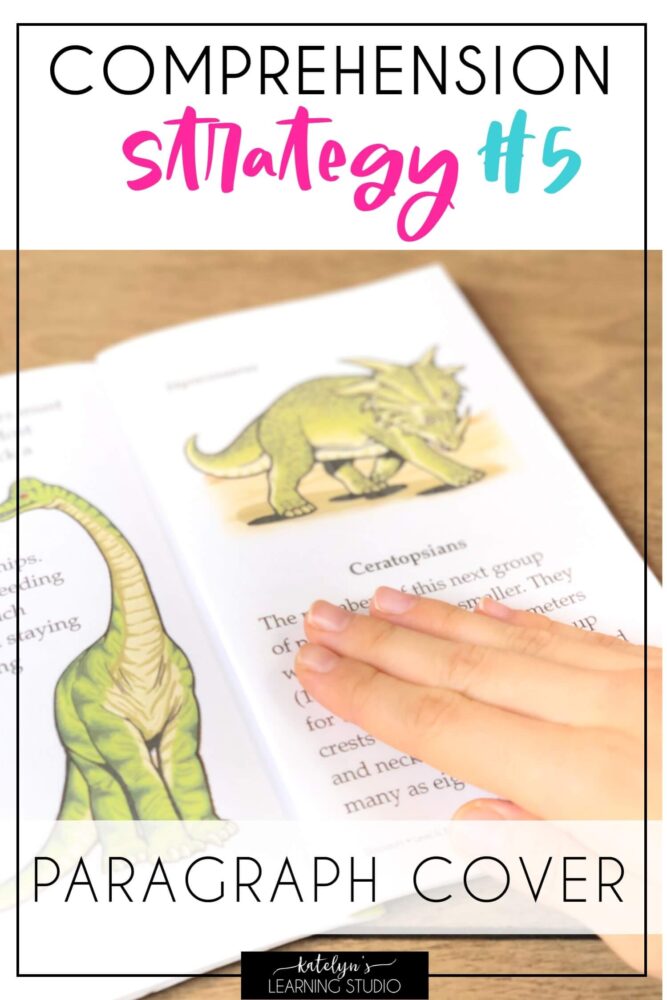
This is one of the most effective reading comprehension strategies you will try.
Strategies for Reading Comprehension #5: One Paragraph Cover Up
This is an excellent reading comprehension interventions activity! When students have a hard time with reading comprehension, try breaking up the text into small chunks and giving immediate feedback. Have students read one paragraph, then immediately cover the paragraph with their hand, look up, and say one sentence describing what the paragraph was about. This reading comprehension activity is great because it is so focused on understanding what you read, it is quick paced (a ton of quick comprehension checks instead of one long one), and it gives students practice summarizing. If students read the paragraph and are unable to say what it’s about, have them go back and re-read it, then try again.
This activity also hits up some kinesthetic and tactile learning styles, which can really bump up engagement! I have a ton more intervention activities that hit different learning styles in this post.

When figuring out how to improve reading comprehension, try using fun tools like highlighters.
Strategies for Reading Comprehension #6: Highlighters
You can use highlighters for several different strategies for reading comprehension. Highlighters add a visual and hands-on element that helps students stay focused on the text. You can have students use 2 colors as they read a text, and highlight the main idea one color with supporting details another color. You can have students read a text and then assign comprehension questions about the text. Have them highlight in the text where they find the answers to the questions. You could also just give them a highlighter and have them highlight their favorite parts or interesting facts. There are so many different ways to use highlighters that will help engage the students with the test and read for comprehension.
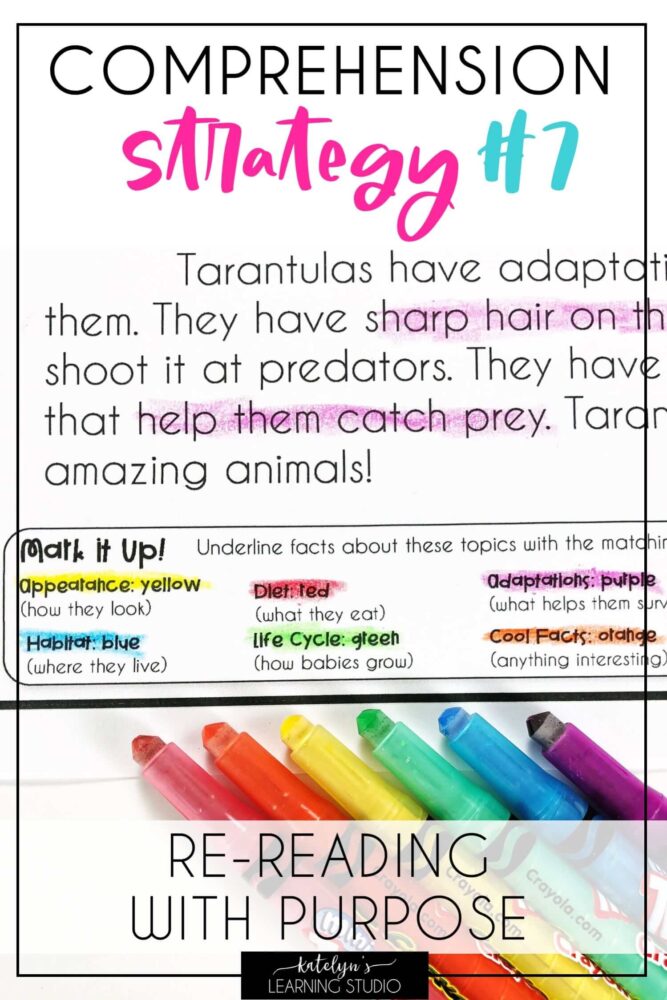
Repeated readings can be great reading for comprehension activities.
Strategies for Reading Comprehension #7: Repeated Reading with a Purpose
Repeated readings are a great reading fluency strategy (see my list of fluency strategies that will transform your readers here), but they can also be a super-effective reading comprehension strategy. When the repeated readings are focused on the meaning of the text, students are able to practice reading with a purpose and use reading for comprehension strategies. Ideas for meaningful repeated readings include reading a text with a different perspective each time (from a different character’s point of view or after learning some facts about the event), reading the text to several different students/partners to teach a concept or tell a story, reading the text looking for something different each time (the main idea, a new fact you learned, author’s purpose, etc.). These animal research passages have a color-coding key that works great for going back and reading for different types of facts.

Reading comprehension interventions can include marking up and annotating texts.
Strategies for Reading Comprehension #8: Annotating Text
Annotating text is another great strategy for reading comprehension that gets students to really engage with the text. Give students a key with symbols for each element you want them to look for. Ideas for symbols include having them underline, circle, draw a star, heart, exclamation mark, or question mark. Have them mark by where they have a question, find a new word, find something funny or interesting, find the main idea, etc. This will get students thinking about the text, and as they make notes directly onto the text it will be easier for them to remember what they read as they glance over their notes and marks.
Understanding what you read is the whole reason why we read, so using strategies for reading comprehension that will help students understand text is so important! I hope this list of strategies for reading comprehension can give you ideas of how to improve reading comprehension and student success.
Try downloading this FREE Reading Intervention Cheat Sheet if you need more activities and strategies for reading comprehension. There are so many tips to help your struggling readers in all areas of reading, it is a life-saver!
Happy reading and teaching!
